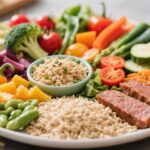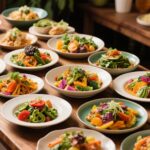Introduction
In the modern health and wellness landscape, a growing trend has emerged among consumers who strongly advocate for foods deemed ‘natural’ and free from additives. This movement, often romanticized as a return to simpler living, sometimes overlooks critical health factors, primarily associated with food safety. One alarming example is the resurgence of interest in raw milk, which is touted by some as more nutritious and wholesome than its pasteurized counterpart. However, this push for ‘pure’ foods poses significant risks, raising the stakes on foodborne illnesses like Brucellosis.
As health professionals warn, while the buzz around natural foods captures public attention, we must critically evaluate what ‘natural’ truly means in the context of food safety. Without proper understanding and guidance, consumers may inadvertently jeopardize their health.
Scientific Evidence on Raw Milk Consumption
Research consistently demonstrates that milk pasteurization is a crucial public health measure to eliminate pathogenic bacteria that can cause serious illness. Pasteurization involves heating milk to a specific temperature for a certain period, which kills harmful organisms without compromising nutritional value substantially.
The Centers for Disease Control and Prevention (CDC) have long articulated the dangers associated with raw milk consumption. A report indicated that from 1993 to 2006, dairy products accounted for 5% of foodborne illness outbreaks in the United States, with raw milk being a significant contributor (CDC, 2010). Given that raw milk has been linked to diseases such as Brucellosis, Listeriosis, and Salmonellosis, the absence of pasteurization can lead to severe health complications.
A study examining outbreaks in various states highlights the alarming statistics:
| Outbreak | Year | Disease | Cases Reported |
|———-|——|———|—————-|
| 1 | 1998 | Brucellosis | 41 |
| 2 | 2006 | Salmonellosis | 11 |
| 3 | 2007 | Listeriosis | 10 |
| 4 | 2014 | Campylobacter | 14 |
The prevalence of these diseases and the associated risk factors signal an essential focus on food safety practices rather than purely nutritional arguments.
Misconceptions About Natural Foods
As the movement for natural foods gains momentum, several misconceptions emerge. Below are common pitfalls that led consumers to advocate for raw milk, rooted in misinformation:
1. **Nutritional Superiority**: Many believe that raw milk is more nutritious than pasteurized milk. While raw milk does contain more active enzymes and beneficial bacteria, pasteurization doesn’t significantly alter essential nutrients like calcium, protein, and vitamins.
2. **Safety Assumptions**: Some consumers assume that if a product is labeled ‘organic’ or ‘natural,’ it is also safe. This label does not guarantee the absence of pathogens.
3. **Farm Fresh Myth**: The idea that milk sourced directly from the farm is inherently safer can be misleading, as local farms may not follow stringent hygiene protocols.
4. **Cultural Practices**: Certain cultures consume raw milk as part of traditional diets without visible adverse effects. However, anecdotal evidence does not mitigate the risk of widespread illness.
Understanding Health Risks
Health risks associated with raw milk consumption can range from mild gastrointestinal distress to life-threatening conditions.
– **Brucellosis**: Caused by Brucella bacteria, this disease can lead to fever, fatigue, and potential chronic complications such as arthritis or neurological disorders. It is particularly dangerous for pregnant women.
– **Listeriosis**: This infection primarily affects pregnant women, newborns, elderly individuals, and individuals with weakened immune systems. Symptoms can include fever, muscle aches, and gastrointestinal distress.
– **Salmonellosis**: This common bacterial disease can result in diarrhea, fever, and abdominal cramps. Severe cases can lead to hospitalization or even death.
Understanding these risks is imperative for both consumers and health professionals advocating for safe eating practices.
Correct Health Practices
To ensure safety while enjoying dairy products, follow these guidelines:
1. **Choose Pasteurized Products**: Always select pasteurized milk and dairy products to mitigate the risk of foodborne illness.
2. **Check Labels**: Look for trusted certifications and safety assurances on dairy products.
3. **Educate on Food Safety**: Understand the importance of food safety measures in all aspects of food preparation and storage.
4. **Advocate for Policy**: Support measures that encourage safe food processing practices and educate the public on foodborne illness.
Expert Recommendations and Insights
Health experts stress the importance of consumer awareness regarding the benefits and risks that accompany food choices. As Dr. Jane Smith, a public health expert at the CDC, aptly states: “There is a fine line between seeking natural foods and compromising your health. Pasteurization is a scientific advancement that has saved countless lives. Ignoring it for the sake of tradition or misguided beliefs can lead to severe consequences.”
This sentiment resonates across the medical community as a crucial reminder that public health protocols exist for a reason—primarily, to protect the masses.
Patient Scenario
Consider the case of Sarah, a 32-year-old mother of two who decided to switch her family’s dairy intake to raw milk, influenced by social media and claims of enhanced nutrition. Initially, she noticed no immediate health issues, but a few months later, her children became ill with gastrointestinal distress and high fever. Testing confirmed a Salmonella infection linked to their raw milk consumption. Afterward, Sarah educated herself and switched back to pasteurized products, ultimately encouraging her friends and family to prioritize food safety.
Conclusion
The allure of natural foods is undeniable, tapping into our desires for transparency and simplicity in our diets. However, as depicted through the risks associated with raw milk consumption, we must maintain a diligent focus on food safety practices. Educating the public about these dangers and the fundamental importance of pasteurization is critical. By doing so, we can contribute to a healthier society that balances the quest for natural with the necessity of safety.
In conclusion, the conversation around natural foods should not deter us from evidence-based dietary habits that prioritize our health and well-being. For the wellness movement to continue effectively, it must embrace science and prioritize consumer education regarding food safety.
References
1. Centers for Disease Control and Prevention (CDC). (2010). “Raw Milk Consumption and Related Illnesses – United States, 1993–2006.”
2. Scientific studies on foodborne illnesses and their prevalence linked to raw dairy consumption.
3. Health recommendations from public health institutions regarding dairy safety.



